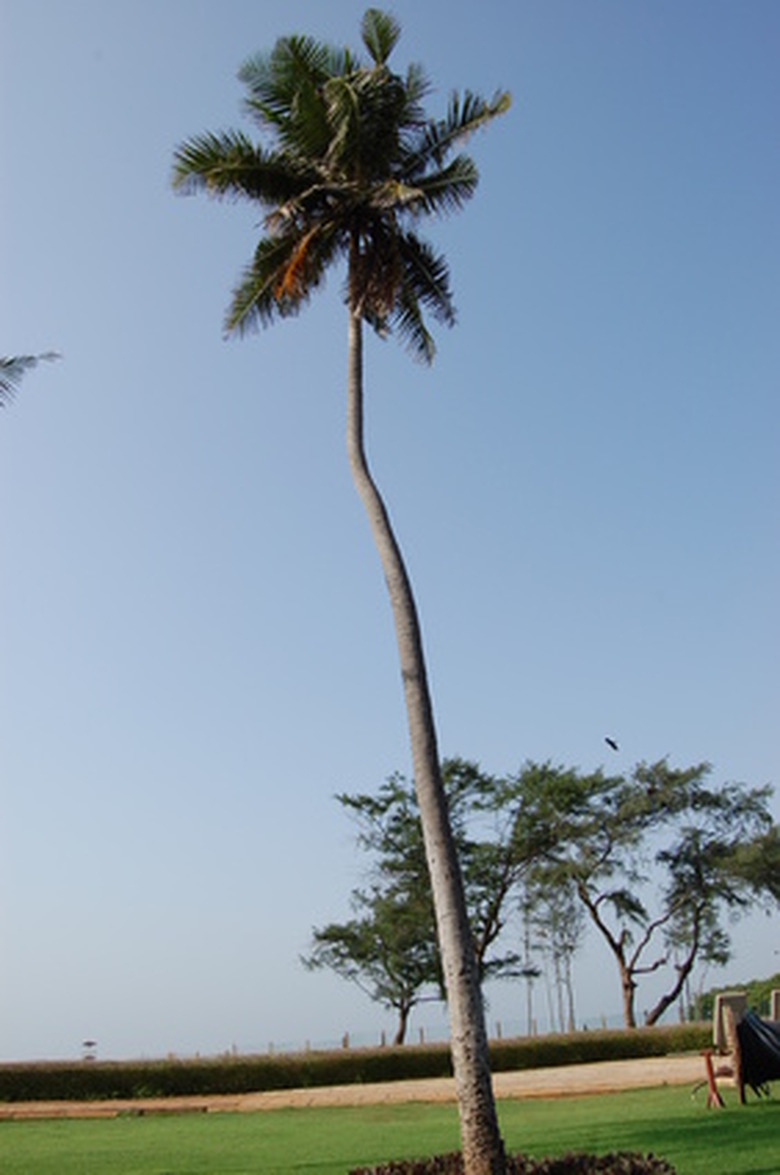What Are Four Characteristics Of Seed Plants?
Seed plants fall into two groups: gymnosperms and angiosperms. Together, the fruitless gymnosperms and the far more common fruited angiosperms make up more than 80 percent of the plants on the earth. Although these plants exhibit a tremendous amount of variety in size, shape, appearance and adaptations, all of them share a number of common characteristics.
Sexual Reproduction
All seed plants use sexual reproduction, requiring both a male and a female flower. Pollen is transported by either the wind, the water or a pollinator from the male anther to the female stigma. The pollen forms a tube down the style to the ovary, which contains unfertilized seeds. The pollen fertilizes the seed, which develops into a fully formed seed (often with a fruit) over the next season.
- Seed plants fall into two groups: gymnosperms and angiosperms.
- The pollen fertilizes the seed, which develops into a fully formed seed (often with a fruit) over the next season.
Seed Parts
All seed plants have seeds which contain an embryo, a seed coat and stored food. The seed coat protects the seed, allowing it to remain dormant until the weather is just right for germination. At that point, the leaves of the embryo absorb water and the radical or root emerges, shortly followed by the plumule or shoot. The stored food nourishes the seed, allowing it to thrive until it becomes fully established.
Vascular Systems
Seed plants all have vascular systems consisting of xylem and phloem. Food is produced in the flood and moves through tubes called the phloem, which distribute it through the plant, giving the cells energy. The xylem, on the other hand, bring water up from the roots, keeping the plant hydrated and enabling photosynthesis.
- All seed plants have seeds which contain an embryo, a seed coat and stored food.
- At that point, the leaves of the embryo absorb water and the radical or root emerges, shortly followed by the plumule or shoot.
Dispersal
All seed plants have some means of dispersal to scatter their seeds at a distance from the mother plants, ensuring that offspring will grow and spread. Many seed plants use fruit for disposal. Birds, mammals and other animals eat the fruit, swallowing the seeds. Later, the mammals excrete the seeds, depositing them in a new location where plants can spring up.
Other plants use wind or water. Wind blown seeds are small and light, and attached to filaments which act like sails or wings to carry them away on the wind. Water dispersed plants have bouyant seeds contained in tough shells or thick-skinned fruits capable of floating on the water for a distance and settling along the stream.
- All seed plants have some means of dispersal to scatter their seeds at a distance from the mother plants, ensuring that offspring will grow and spread.
Some seeds use burrs to disperse themselves. The seeds catch in the fur of passing animals and stick there for a while until they finally rub off in a different location. Finally, some plants actually use ballistics to disperse their seeds. Seed pods will burst open, catapulting the seeds several feed in random directions, where they can then take root.
